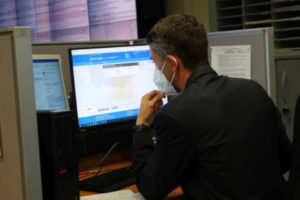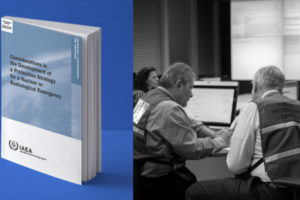Experts Assess Implementation of International Conventions on Nuclear Emergency Response

Countries need to work closely together in the event of a nuclear emergency, so sharing experience and improving emergency preparedness are key tasks stemming from the IAEA’s mandate. Those responsible for emergency preparedness at the national level – officially referred to as Competent Authorities – met in Vienna last week at the 11th Meeting of the Representatives of Competent Authorities identified under the Early Notification Convention and the Assistance Convention, and discussed ways to ensure that the necessary expertise, services and equipment are available promptly upon request by any government in the event of a nuclear or radiological emergency.
In his remarks, IAEA Director General Rafael Mariano Grossi referred to the role of the two conventions in relation to nuclear facilities in Ukraine. “Everything we have done to assist Ukraine in maintaining nuclear safety, security and an adequate level of safeguards; everything we have done to inform the wider world of the situation during this first military conflict fought in the direct proximity of a major nuclear power programme, we have done through the framework that many of you have built and improved in the years leading up to today…this framework is being tested like never before,” he said.
A strong and integrated international framework for notification and assistance in the event of a nuclear emergency is essential to protect people and the environment from the harmful effects of ionizing radiation, said the meeting’s Chair, Faizan Mansoor, Head of the Pakistan Nuclear Regulatory Authority. “This meeting is essential, since it gathers the world’s experts in nuclear emergency preparedness and response to determine if our arrangements remain effective when emergencies occur under increasingly complex conditions,” he said.
Competent Authorities are the entities designated by their governments to carry out specific duties with respect to issuing and receiving information relating to nuclear and radiological emergencies under these conventions. They meet every two years to evaluate and strengthen the implementation of the Early Notification Convention and the Assistance Convention. Both conventions were concluded in 1986, in the immediate aftermath of the accident at the Chornobyl Nuclear Power Plant, and establish the international framework for the exchange of information and the prompt provision of assistance in the event of a nuclear or radiological emergency, with the aim of minimising the consequences.
“Radiation does not recognize borders, and countries need to work together swiftly to prevent people from coming to harm in the wake of a transboundary radioactive release,” said Carlos Torres Vidal, Director of the IAEA’s Incident and Emergency Centre.
Preparing to Respond to a Rare Event
The IAEA has created a number of platforms and mechanisms, such as the Unified System for Information Exchange in Incidents and Emergencies (USIE), the International Radiation Monitoring Information System (IRMIS) and the Assessment and Prognosis Tools and the Response and Assistance Network to help countries work with each other, and with the IAEA and other international organizations, during a response. For example, USIE is a secure platform for information sharing that allows countries to fulfil their obligations under the Early Notification Convention; the same function is performed for the Assistance Convention by the Response and Assistance Network, or RANET, which allows countries to offer, and receive, assistance and expertise; and IRMIS collects and maps large quantities of environmental radiation monitoring data during nuclear or radiological emergencies.
The IAEA supports countries in setting up robust preparedness mechanisms, through the development of safety guides and publications, and the provision of trainings and other capacity-building initiatives.
Although most people associate nuclear emergencies with accidents at nuclear power plants, such as those at Chornobyl (1986) and Fukushima Daiichi (2011), such events are in fact very rare. At the same time, the Response and Assistance Network has been mobilized several times in the past decade to respond to countries dealing with the consequences of far more common radiological emergencies, such as workers becoming accidentally exposed to hazardous levels of radiation from contact with radiation sources used in industry or medicine.
“These past two years have demonstrated that emergencies come in diverse forms such as earthquakes, floods and fires, and that we need to pay more attention than ever before to our motto: Prepare. Respond. Improve,” said Lydie Evrard, Deputy Director General and Head of the Department of Nuclear Safety and Security.



